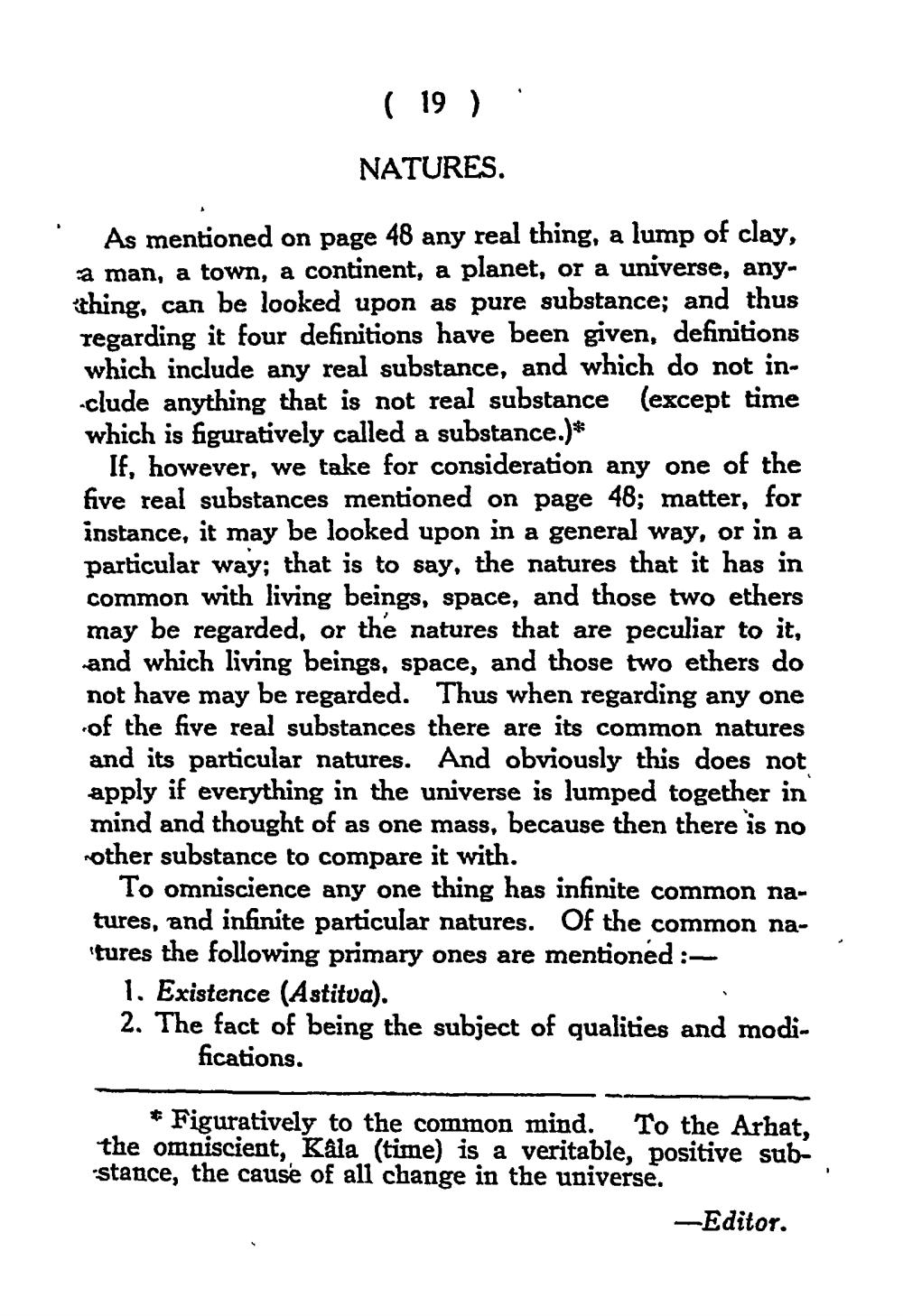________________
( 19 ) . NATURES.
As mentioned on page 48 any real thing, a lump of clay, a man, a town, a continent, a planet, or a universe, any. thing, can be looked upon as pure substance; and thus regarding it four definitions have been given, definitions which include any real substance, and which do not include anything that is not real substance (except time which is figuratively called a substance.)*
If, however, we take for consideration any one of the five real substances mentioned on page 48; matter, for instance, it may be looked upon in a general way, or in a particular way; that is to say, the natures that it has in common with living beings, space, and those two ethers may be regarded, or the natures that are peculiar to it, and which living beings, space, and those two ethers do not have may be regarded. Thus when regarding any one of the five real substances there are its common natures and its particular natures. And obviously this does not apply if everything in the universe is lumped together in mind and thought of as one mass, because then there is no other substance to compare it with.
To omniscience any one thing has infinite common natures, and infinite particular natures. Of the common natures the following primary ones are mentioned :
1. Existence (Astitva). 2. The fact of being the subject of qualities and modi
fications.
* Figuratively to the common mind. To the Arhat, the omniscient, Kala (time) is a veritable, positive substance, the cause of all change in the universe.
-Editor.




